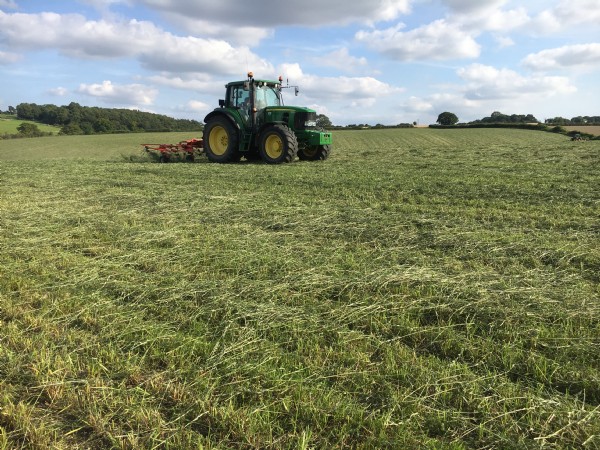

By cutting green fodder for hay or allowing natural fermentation into haylage, livestock can enjoy the benefits of being grass-fed over the winter.
Good hay and haylage depends on many factors. These include appropriate fertiliser applications, growth stage when cut and how the crop is wilted and stored. But the most important factor is to select the right crop species and varieties to suit the soil type from the start.
Grass only hay leys offer high quality and bulk while a softer meadow mixture can be created by adding sweet vernal grass. A longer term option for the hay and haylage producer includes upright hybrid ryegrass and longer lasting perennial ryegrass. Although slower to establish in the first year, Timothy will provide good bulk from year two onwards. For specialist use Lucerne may be made into hay for the equine market where it is known as alfalfa. We recommend the use of a non-competitive grass mixture to be sown with sainfoin. The grass fills the base of the crop, increasing yield and soluble sugars to improve silage fermentation. The grass seed element should be surface sown and rolled in.
The ryegrass based leys are best suited to fertile and moisture retentive soils. Ryegrass can suffer on drought prone soils, so an option on dry land could be to add a deeper rooting festulolium plant to the mixture. The crop should be sown in the autumn (August- September) to provide good yields in the following spring.
Date Posted: 17th January 2018



